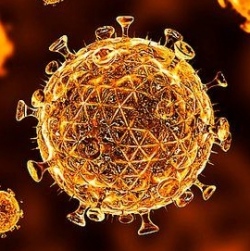
An electrical engineer at Michigan Technological University has taken a major step towards creating a superlens that would use visible light to see objects as small as 100 nanometers across. This would let you see a virus in a drop of blood and could make ultra-high-resolution microscopes as commonplace as cameras in mobile phones.
Optical lenses are limited by light’s diffraction limit. So currently, even the best lenses won’t let us see objects smaller than 200 nanometers across — roughly the size of the smallest bacterium. Electron microscopes allow us to see objects that are as small as a nanometer wide, but they are very expensive and the size of a large desk.
Making a superlens requires metamaterials — artificial materials which have properties not seen in nature. Durdu Guney, assistant professor of electrical and computer engineering at Michigan Tech has found a material that can help us see even smaller objects using only visible light.
The secret lies in plasmons — quasiparticles that result from the quantisation of plasma oscillations near the surface of thin metal films. When excited by an electromagnetic field, they gather light waves from an object and refract it in a way not seen in nature, called negative refraction. This allows the lens to overcome the diffraction limit.
